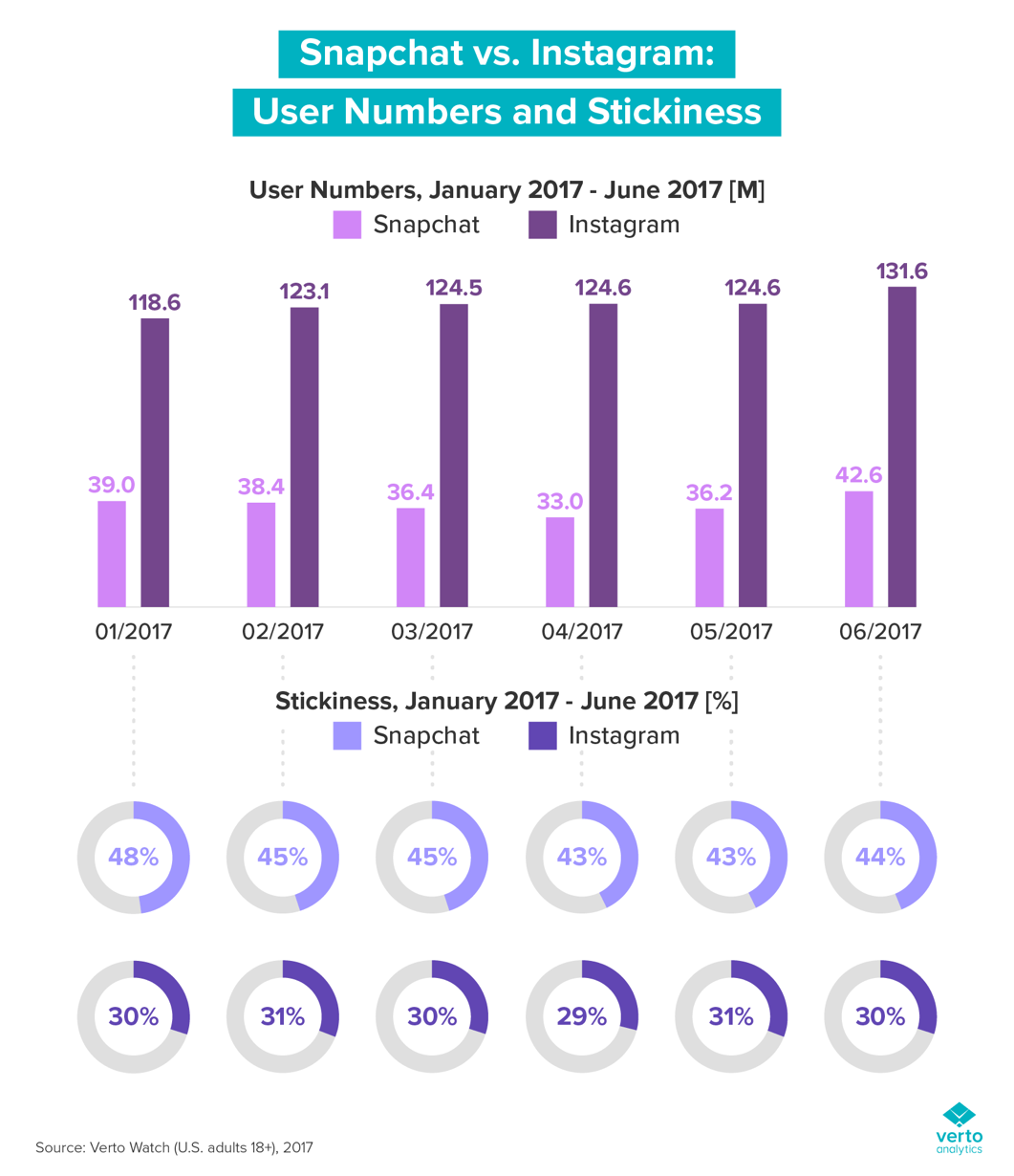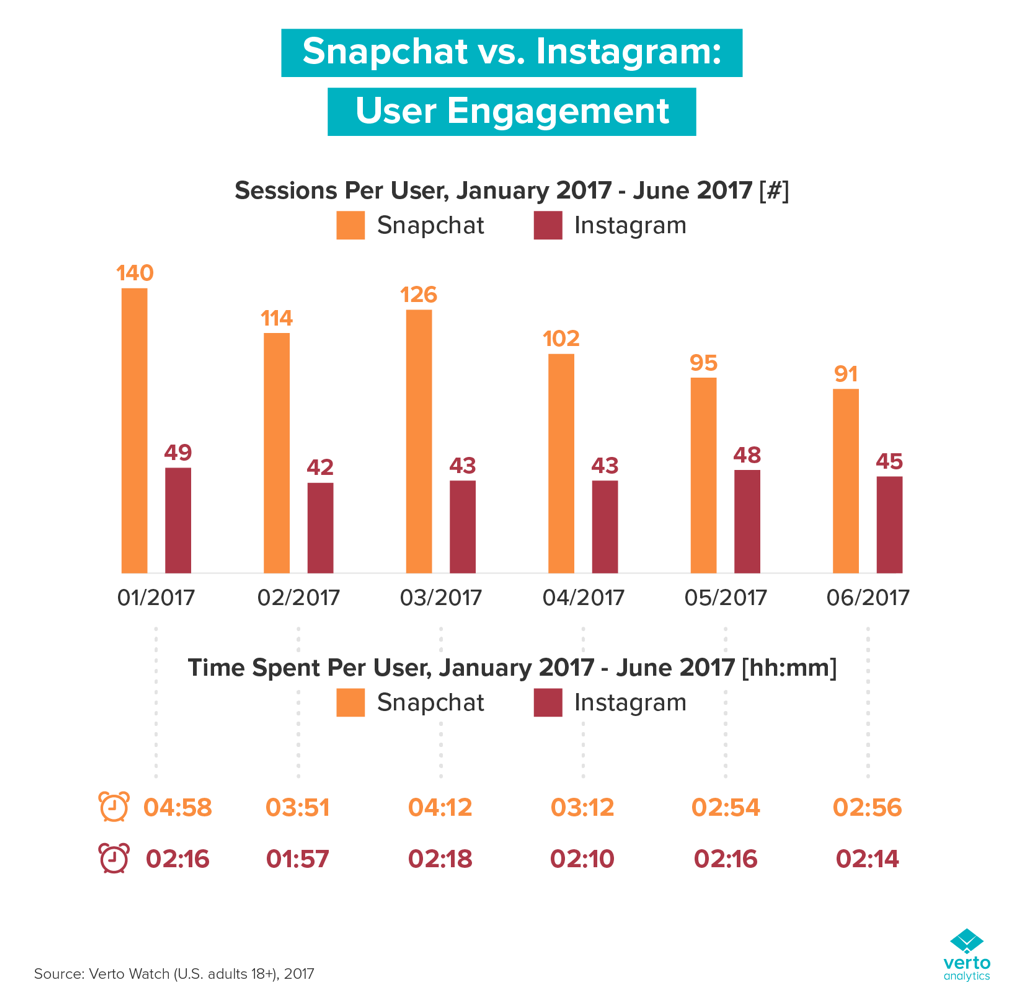Editor’s note: Connie Hwong is the global content marketing director at Verto Analytics, Berlin. This is an edited version of a post that originally appeared here under the title, “Chart of the week: Is Instagram still beating Snapchat?”
Investors and tech pundits alike are closely watching Snapchat’s share price, which is still recovering from disappointing Q1 earnings results and dropped below its original offering value just a couple of weeks ago. July 29 also marked the end of the first lockup period, which prevented early employees and investors from selling their shares. Snapchat is facing rumors of sluggish user growth, dwindling interest from advertisers, and increasingly aggressive competition from Instagram. And so, six months after the most-hyped tech IPO of the year, how is Snapchat doing? Verto Analytics took a look at user growth and engagement (among U.S. adults, ages 18 and older) for Snapchat and Instagram over the past two quarters.
User data
When it comes to sheer user numbers, our data shows that Instagram continues to hold a clear advantage, benefitting from its relationship with parent company Facebook (which recently surpassed two billion global users). Instagram still has nearly triple the number of monthly unique users as Snapchat. In June 2017, Instagram attracted 131.6 million users over the course of the month, while Snapchat claimed just 42.6 million. These user number ratios reflect a trend that we’ve seen since the beginning of the year.

User engagement
User numbers don’t tell the whole story – especially for platforms that cater to advertisers and other monetization tactics that rely on loyal and engaged audiences to succeed. Instagram has been rolling out Snapchat copycat features almost as quickly as Snap can develop them, creating more reasons for consumers to use a given app and remain engaged. But consumers appear to prefer the original, at least for the time being.

Based on the number of monthly sessions per user and the amount of time users spend with each app, Snapchat is clearly winning the user engagement, although Verto Analytics data shows that Snapchat’s lead is beginning to shrink. While consumers averaged 140 monthly sessions with Snapchat in January 2017, compared to Instagram’s 49 monthly sessions, that lead had closed by June 2017. Snapchat users averaged just 91 monthly sessions, while Instagram users averaged 45 monthly sessions. Similarly, the amount of time that users spend on Snapchat per month has dropped quickly in 2017, from a high of nearly five hours in January to just under three hours in June. In contrast, Instagram shows far more consistent metrics: since the beginning of the year, users have spent an average of around two hours per month on Instagram. Snapchat’s lead is further confirmed by its stickiness index (how Verto measures user engagement by comparing monthly users to daily users). Snapchat’s stickiness in 2017 has held close to around 45 percent between January and June, compared to Instagram’s average of about 30 percent.
Although Snapchat seems to have an edge on user engagement, our data shows that lead may be declining. And with Instagram seemingly in full copycat mode when it comes to features and new tools (not to mention Facebook’s rumored video chat device), Snapchat may be left fighting a battle on two fronts: user numbers as well as user engagement.
